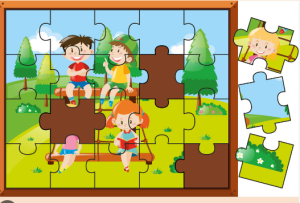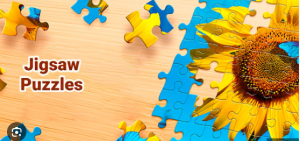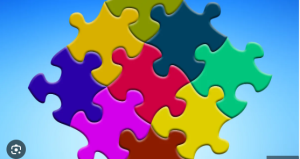Introduction (150 words) Begin by introducing the concept of puzzles as more than just recreational activities. Highlight their role in cognitive development and the impact they have on various aspects of learning.
Section 1: The Cognitive Benefits of Puzzles (500 words)
- Problem-Solving Skills: Discuss how puzzles, be it jigsaw, crosswords, or logic puzzles, enhance problem-solving abilities by requiring analysis and strategic thinking.
- Critical Thinking: Explain how puzzles stimulate critical thinking, fostering creativity and unconventional approaches to challenges.
- Memory Enhancement: Explore studies and evidence showing how puzzles help improve memory retention and recall, aiding learning in diverse subjects.
Section 2: Puzzles and Learning in Education (600 words)
- Educational Applications: Highlight how puzzles are integrated into educational settings, aiding in teaching various subjects from mathematics to language learning.
- Engagement and Motivation: Discuss how puzzles make learning enjoyable, boosting student engagement and motivation.
- Individualized Learning: Explain how puzzles cater to different learning styles, offering a personalized learning experience for students.
Section 3: Puzzles Beyond Academics (500 words)
- Stress Relief and Relaxation: Discuss the psychological benefits of puzzles in reducing stress and anxiety, which can positively impact learning abilities.
- Social and Emotional Development: Explore how collaborative puzzles foster teamwork, communication, and emotional intelligence, essential for holistic learning.
- Lifelong Learning and Cognitive Health: Touch upon how engaging in puzzles throughout life maintains cognitive agility and potentially reduces the risk of cognitive decline.
Section 4: Incorporating Puzzles into Daily Routine (400 words)
- Tips for Effective Puzzle Integration: Provide practical suggestions on how readers can incorporate puzzles into their daily lives to enhance learning and cognitive abilities.
- Recommended Puzzle Types for Different Age Groups: Offer recommendations for puzzles suitable for children, adolescents, adults, and seniors.
Conclusion (150 words) Summarize the overarching benefits of puzzles in learning, emphasizing their versatility in enhancing cognitive skills and their relevance across age groups and educational settings.
Closing Note Encourage readers to embrace puzzles not just as a leisure activity but as a valuable tool for continuous learning and cognitive enrichment.
Title: “The Cognitive Benefits of Puzzles: How They Foster Learning and Development”
Introduction (Approx. 200 words)
- Hook: Begin with an engaging anecdote or a surprising fact related to puzzles.
- Definition of Puzzles: Define what puzzles are and the diverse forms they can take.
- Thesis Statement: Highlight the focus of the article on the cognitive, educational, and developmental advantages of engaging in puzzles.
Section 1: Understanding the Cognitive Mechanics (Approx. 400 words)
- Explaining Cognitive Processes: Discuss how puzzles stimulate various cognitive skills such as problem-solving, critical thinking, and spatial reasoning.
- Neurological Impact: Delve into the neurological aspects, explaining how puzzles activate different parts of the brain.
Section 2: Puzzles and Learning in Children (Approx. 500 words)
- Early Development: Discuss how puzzles aid in early childhood development, including motor skills, hand-eye coordination, and cognitive abilities.
- Educational Value: Explore how puzzles are used in educational settings to reinforce learning concepts and enhance academic skills.
Section 3: Puzzles and Adult Learning (Approx. 500 words)
- Stress Relief and Mental Wellness: Highlight the role of puzzles in reducing stress and improving mental wellness among adults.
- Continuous Learning: Discuss how puzzles promote lifelong learning and cognitive maintenance in adults.
Section 4: Types of Puzzles and Their Educational Impact (Approx. 400 words)
- Diverse Forms of Puzzles: Explore various types like jigsaw puzzles, crosswords, Sudoku, and their specific educational benefits.
- Tailoring Puzzles to Learning Objectives: Highlight how different puzzles cater to specific learning goals.
Section 5: Strategies for Incorporating Puzzles into Learning (Approx. 300 words)
- Educational Settings: Discuss effective ways educators integrate puzzles into teaching methodologies.
- Personal Learning: Offer suggestions for individuals on incorporating puzzles into their self-education routines.
Section 6: Case Studies or Research Findings (Approx. 300 words)
- Highlighting Studies: Present notable research studies or case examples that support the benefits of puzzles in learning and development.
Conclusion (Approx. 200 words)
- Summarize Key Points: Recap the cognitive benefits discussed throughout the article.
- Encouragement and Call to Action: Encourage readers to incorporate puzzles into their lives for enhanced learning and cognitive growth.
Introduction
- Opening Hook: Engage readers with the fascination of puzzles and their ubiquitous presence in human history.
- Definition of Puzzles: Define what puzzles are and the diverse forms they can take.
- Thesis Statement: Highlight the central argument – how puzzles are invaluable tools that facilitate learning and cognitive development.
Section 1: Understanding Puzzles
- History of Puzzles: Briefly explore the historical significance of puzzles and their evolution.
- Types of Puzzles: Discuss various categories such as jigsaw puzzles, crosswords, logic puzzles, etc.
- Psychological Aspect: Explain the psychology behind why humans are drawn to puzzles and their inherent benefits.
Section 2: Cognitive Benefits of Puzzles
- Problem-Solving Skills: Explore how puzzles foster critical thinking and problem-solving abilities.
- Enhanced Memory: Discuss how puzzle-solving exercises memory retention and recall.
- Improved Concentration: Explain the correlation between puzzles and enhanced focus and attention span.
- Enhanced Creativity: Highlight how puzzles encourage thinking outside the box and stimulate creativity.
Section 3: Learning Through Puzzles
- Educational Value: Discuss the educational benefits of puzzles in various fields like mathematics, language, and spatial awareness.
- Social and Emotional Development: Explore how puzzles promote teamwork, communication skills, and emotional regulation.
- Puzzles for Different Age Groups: Discuss age-appropriate puzzles and their benefits for children, adults, and seniors.
Section 4: Practical Application
- In Educational Settings: Explore how educators incorporate puzzles into curriculums to enhance learning outcomes.
- Therapeutic Use: Discuss the therapeutic benefits of puzzles for individuals with cognitive disorders or mental health issues.
- Everyday Life and Professional Growth: Illustrate how solving puzzles in leisure time can have positive effects on one’s cognitive abilities and problem-solving skills in professional settings
Section 5: Tips and Strategies for Effective Puzzle Solving
- Approaches to Problem-Solving: Discuss different strategies and approaches for tackling puzzles effectively.
- Persistence and Patience: Emphasize the importance of perseverance and patience in solving complex puzzles.
- Learning from Mistakes: Highlight the value of learning from mistakes and the iterative process of puzzle-solving.
Section 6: Challenges and Limitations
- Overcoming Frustration: Address the potential frustration that may arise during puzzle-solving and ways to manage it.
- Limitations of Puzzles: Discuss any drawbacks or limitations associated with excessive reliance on puzzles for learning.
Section 7: Conclusion
- Summary of Key Points: Recap the main benefits of puzzles in learning and cognitive development.
- Encouragement for Implementation: Encourage readers to incorporate puzzles into their daily routine for continuous learning and growth.
- Final Thoughts: Conclude by reiterating the importance of puzzles as invaluable tools for enhancing cognitive abilities and lifelong learning.
Additional Tips:
- Use Case Studies or Research Findings: Include studies or anecdotes demonstrating the positive impact of puzzles on learning.
- Visuals and Examples: Incorporate images or examples of various puzzles to enhance engagement.
- Quotations or Interviews: Include quotes from experts or individuals who have experienced the benefits of puzzles firsthand.



